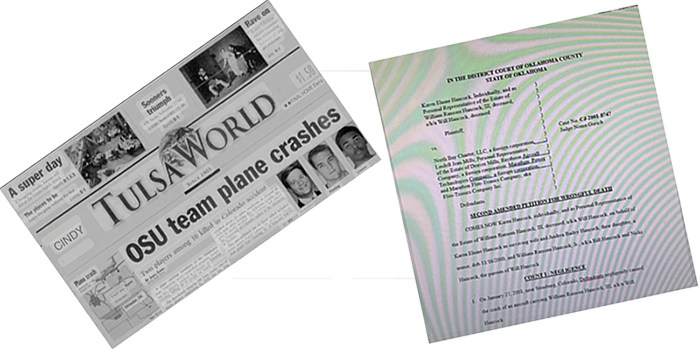Did you know that over 95% of all personal injury cases settle before trial, but the actual process by which insurance companies calculate your injury claim value is far more complex—and secretive—than you might imagine? If you or a loved one has suffered injuries and are facing a negotiation with insurers, understanding these hidden tactics can be the single most important step in maximizing your settlement.
Shocking Insights: The Hidden World of Insurance Negotiation Injury Case Settlements
“Over 95% of all personal injury cases settle before trial, yet the way insurance companies assess your injury claim is nothing like you expect.”
For most injury victims dealing with an insurance negotiation injury case, the settlement process is a mysterious and, at times, frustrating journey. Many imagine a fair and balanced system, but in reality, insurance companies deploy advanced tactics and data-driven formulas to minimize settlements and maximize their own profit margins. You might expect compassion and transparency, but adjusting a personal injury case is driven primarily by numbers, policies, and expert negotiators trained to protect the insurer’s interests.
Insurance companies rarely reveal the true methods they use when evaluating your injury claim. Instead, they count on your lack of experience and knowledge of injury law and the inner workings of settlement negotiations. This is why understanding what happens behind closed doors, knowing your claim’s true worth, and applying the right counter-tactics are essential for anyone hoping to get a fair settlement amount.

What You’ll Learn About Insurance Negotiation Injury Case Strategies
- What goes on behind closed doors during settlement negotiations
- How insurance companies value your personal injury case
- Key negotiation steps for maximizing your injury claim
- The role of personal injury lawyers and injury law in settlement discussions
Understanding Insurance Negotiation Injury Case Fundamentals
What Is an Injury Case: Definitions in Personal Injury Law
At its core, an injury case is a legal dispute that arises when one person suffers harm from an accident or injury and someone else might be legally responsible. Personal injury law is designed to protect victims, ensuring they receive compensation for losses—including medical expenses, property damage, lost income, and pain and suffering. The fundamental principle of a personal injury case is that if someone’s carelessness or intentional actions result in your harm, they (or their insurer) are responsible for compensating you.
In a typical insurance negotiation injury case, the injured person (plaintiff) submits an injury claim to the responsible party’s insurance company. This claim details the circumstances of the accident, provides evidence of blame, and documents all expenses and losses. From the outset, insurance companies are actively working to control the outcome—often providing initial settlement offers far below what the injury claim is worth.

Types of Personal Injury Cases and Injury Claims
Not all personal injury cases are created equal. Common types include car accidents, slip and fall incidents, product liability defects, medical malpractice, workplace injuries, and wrongful death. The nature of your injury case impacts how your insurance claim is evaluated—the type of injuries, setting, and applicable laws shape the negotiation process and potential settlement amount.
Each category of injury claim brings unique challenges: car accidents typically involve police reports and insurance adjuster investigations; medical malpractice needs expert testimony and often ends in litigation; slips and falls hinge on proving negligence and conditions. Knowing the specifics of your personal injury case arms you with stronger evidence when negotiating with the insurance company and can affect how personal injury lawyers approach your claim.
Behind the Scenes: How Insurance Companies Assess Personal Injury Cases
How Insurance Companies Use Data and Formulas in Settlement Negotiation
Insurance companies rely heavily on sophisticated software and calculators to determine what your personal injury claim is worth. These digital platforms factor in medical expenses, lost wages, future care costs, and pain and suffering. Most insurers employ internal data—drawing from historical settlements of similar injury cases—to set the initial settlement range for your case. The intent is to present a figure that seems fair but falls within the company’s lowest acceptable payout.
Frequently, insurance adjusters are incentivized to minimize payouts by following strict guidelines and pre-set values. They input data about your injury case—diagnosis codes, treatment length, and even your attorney’s reputation—into claim evaluation tools. The result is a settlement offer determined as much by algorithms as by the merits of your claim, which is why victims often need to counter with compelling documentation and a strong demand letter to overcome low initial offers.
Factors Affecting Insurance Negotiation Injury Case Settlement Amount
The final settlement amount isn’t just about your medical bills. Insurance companies consider multiple factors: the severity of injuries, clarity of liability, available evidence, policy limits, pre-existing conditions, and even your willingness to pursue or file a lawsuit. Delays in treatment, gaps in medical records, and comparative negligence claims (suggesting you were partly at fault) are all used to justify a lower payout.
Adjusters also scrutinize pain and suffering claims, valuing them based on multipliers applied to your economic damages. The greater your documentation—photos, treatment notes, witness statements—the stronger your position in settlement negotiations. Still, as one experienced injury lawyer puts it:
“Insurance adjusters are trained to minimize settlement offers and protect their company’s bottom line.” — Experienced Injury Lawyer
Step-by-Step: The Insurance Negotiation Injury Case Process
Navigating a successful insurance negotiation injury case demands a strategic approach, as outlined in these key steps:
- Initial injury claim filing
- Investigation by insurance companies
- Calculating damages and determining liability
- Settlement offer and negotiation process
- Potential to file a lawsuit
The process begins when you submit a formal injury claim to the insurer. They respond with an internal investigation, often assigning an insurance adjuster to gather details, interview witnesses, and review medical documentation. Once facts are established, damages are calculated—including both economic damages (medical bills, lost income) and non-economic damages (pain, impairment).
This groundwork sets the stage for the negotiation process, where the insurer will present a settlement offer—sometimes quickly, often far below your case’s true value. Your response, potentially through your injury lawyer, involves presenting stronger evidence and counteroffers. If negotiations fail, your next step may be to file a lawsuit and seek resolution through the courts.

The Role of Injury Lawyers and Injury Law in Settlement Negotiation
How Personal Injury Lawyers Influence Settlement Amount in an Injury Case
A skilled personal injury lawyer is your strongest ally in any insurance negotiation injury case. Insurers know that claimants without legal representation are less likely to challenge low settlement offers or press for better terms. Personal injury lawyers not only know the true value of your case, but they also recognize insurer tactics—delays, low-ball offers, and confusing documentation requests.
These professionals assemble comprehensive evidence, draft precise demand letters, and counter insurer arguments with facts and legal standards. They use their knowledge of injury law and precedent to boost your settlement amount.
“Hiring a skilled personal injury lawyer levels the playing field between you and the insurance company.”
Demand Letter: Crafting a Powerful Negotiation Tool for Your Insurance Negotiation Injury Case
What To Include in Your Demand Letter for Maximum Impact
Your demand letter is a pivotal element for securing a higher settlement offer in an insurance negotiation injury case. The purpose is to clearly present the facts, outline your injuries and damages, and request a specific dollar amount. To be effective, include: a detailed description of the accident; a fact-based explanation of the defendant’s fault; a breakdown of all medical expenses, lost wages, and related costs; supporting evidence (photos, receipts, reports); and a compelling narrative about how the injury has impacted your life.
A well-prepared demand letter anticipates counterarguments from the insurance company and closes gaps that insurers may exploit. It sets the negotiation baseline and forces the insurer to justify any lower offer. Working with a personal injury lawyer to draft this letter not only lends credibility but also ensures all injury law requirements are met.
Settlement Offers: What Insurance Companies Don’t Want You To Know
Common Tactics Used by Insurance Companies in Settlement Negotiations
- Quick low-ball settlement offers
- Disputing liability in injury cases
- Delaying the negotiation process
- Requesting unnecessary documentation
Insurance companies rarely lead with their best offer. Instead, they hope you are desperate for cash or intimidated by the process. Tactics like quick, low-ball offers may seem tempting but are designed to lock you into a lower-than-deserved amount. Disputing your version of events, requesting excessive paperwork, or dragging out communications can all pressure you to settle prematurely.
Recognizing these insurer strategies is vital for holding your ground. Don’t be discouraged by initial resistance: settlement negotiations are just that—a negotiation. Experienced personal injury lawyers anticipate each move and can turn the tables in your favor.
How Insurance Negotiation Injury Case Strategies Work in Real Settlements
Tables: Sample Insurance Negotiation Injury Case Settlement Amounts by Case Type
| Case Type | Average Settlement Amount | Typical Negotiation Steps | Role of Injury Lawyer |
|---|---|---|---|
| Car Accident | $20,000–$50,000 | Demand Letter > Offer > Counteroffer | Essential |
| Slip & Fall | $10,000–$30,000 | Investigation > Settlement Negotiation | Helpful |
| Medical Malpractice | $50,000–$500,000 | Expert Review > Litigation Likely | Critical |
Red Flags: What Not to Say to an Injury Lawyer or Insurance Company
- Admitting fault
- Sharing details beyond the facts
- Guessing about injuries or damages
- Accepting the first offer without review
The language you use in any conversation with an injury lawyer or insurance adjuster can shape the outcome of your personal injury case. Admitting fault—even in passing—or speculating on your injuries can seriously limit your compensation. Always stick to the facts, avoid volunteering unnecessary details, and never accept an insurer’s first offer without consulting a personal injury attorney.

How to Respond to a Settlement Offer in Your Insurance Negotiation Injury Case
Counteroffer Strategies Used by Experienced Personal Injury Lawyers
When you receive a settlement offer from an insurance company, your response can dramatically affect your final payout. The most effective approach is to respond methodically—thanking the insurer, restating your documented losses, and providing a compelling counteroffer based on evidence. Experienced personal injury lawyers know to highlight gaps in the insurer’s calculations, supply additional medical documentation, and emphasize the pressure points—such as willingness to file a lawsuit.
Counteroffers should never be based solely on emotional appeals. Instead, they should detail why the original offer undervalues your injury case or overlooks key damages such as future medical care or lost earning capacity. Personal injury lawyers often set a higher counter-demand and are willing to negotiate in stages, knowing most personal injury cases settle before going to court. Persistence and solid paperwork win the day.
Real-Life Insurance Negotiation Injury Case Walkthrough
When to File a Lawsuit: Taking Your Insurance Negotiation Injury Case Further
If settlement negotiations stall or insurers refuse to make a reasonable offer, your next step may be to file a lawsuit. This is a powerful lever in the negotiation process—insurance companies know that litigation is costly and unpredictable. Filing suit can force them back to the table with a better offer, or allow you to seek justice via a court verdict. Experienced injury lawyers will advise you on when it’s time to escalate and stand firm for what your injury claim is truly worth.
Even after a lawsuit is filed, most personal injury cases will still settle before trial. The threat of litigation alone can make insurers take your claim much more seriously, increasing your chances of securing a fair outcome.
People Also Ask: Insurance Negotiation Injury Case Questions Answered
How to negotiate injury settlement with insurance company?
Effective negotiation requires a strong demand letter, organized medical evidence, knowledge of your injury case’s value, and the willingness to be patient. Personal injury lawyers are often instrumental in maximizing settlements by countering insurer tactics.
How much do most personal injury cases settle for?
Settlement amounts in personal injury cases vary widely but often range from $10,000 to $75,000. Severe injury cases, medical malpractice, or cases involving significant liability can settle for much higher amounts.
What not to say to an injury lawyer?
Avoid statements that admit fault, exaggerate injuries, or offer speculations. Stick to facts when discussing your case with both injury lawyers and insurance companies.
What is a reasonable settlement offer?
A reasonable settlement offer covers all medical bills, lost wages, pain and suffering, and any anticipated future costs related to your injury case. Assess offers against these criteria and consult a personal injury lawyer before agreeing.
Key Takeaways for Maximizing Your Insurance Negotiation Injury Case Outcome
- Know the true value of your personal injury case
- Leverage expert advice from injury lawyers
- Prepare compelling evidence and documentation
- Don’t accept insurer’s first offer—negotiate
Frequently Asked Questions: Insurance Negotiation Injury Case
Q: How long does an insurance negotiation injury case usually take?
A: Most settle within several months, but complex cases or those proceeding to litigation can take a year or more.
Q: Do I need to hire an injury lawyer to negotiate an insurance claim?
A: While not required, injury lawyers significantly increase your chances of maximizing your settlement, especially in complex or high-stakes cases.
Q: Are all personal injury settlements taxable?
A: Usually, compensation for physical injuries is not taxable, but there are exceptions—consult with an injury attorney or tax professional.
Q: Should I accept the first settlement offer?
A: Rarely. Always evaluate with documentation in hand and seek legal advice before accepting.
Expert Conclusion: Why Expert Legal Guidance is Essential for Your Insurance Negotiation Injury Case
“Every insurance negotiation injury case benefits from professional review—seek guidance before you sign any settlement. For more information contact one of our highly qualified Attorneys at 580-224-0900 for a free consultation.”
Ready to level the playing field and secure what your claim is truly worth? For more information contact one of our highly qualified Attorneys at 580-224-0900 for a free consultation.


